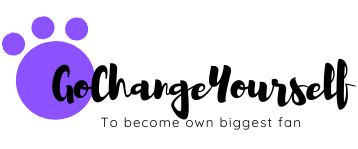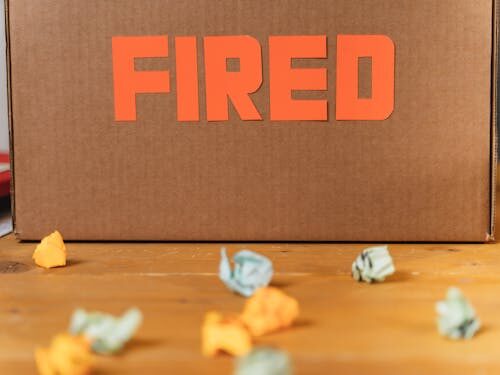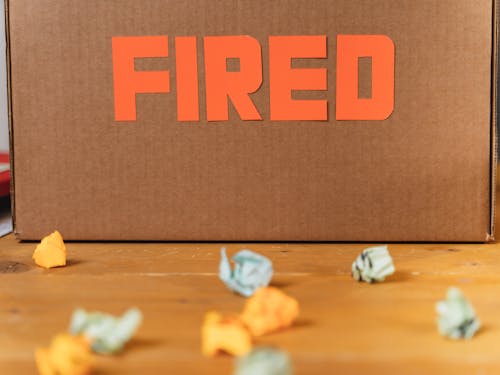Losing your job is one of those moments that just hits differently. It’s not just about the paycheck—it’s about routine, identity, even pride. One minute you’re gearing up for a busy quarter, and the next, you’re trying to figure out what the heck just happened.
If you’re sitting there wondering what to do after layoff, trust me—you’re not alone. And while it’s okay to sit with the shock for a minute, there’s a way through this. Let’s talk about a real-world plan to get you back on your feet, stronger (and maybe even a little wiser) than before.
Table of Contents
1. Let Yourself Feel It
First thing’s first: feel your feelings.
Layoffs can stir up everything from anger and sadness to weird flashes of relief. And bottling it all up? Not helpful.
Action Tip: Give yourself a few days to process—whether that means venting to a friend, going on long walks, or journaling like crazy. Just set a gentle deadline for yourself to start moving forward.
2. Get a Handle on Your Money
When life throws a curveball, you need to know how much gas you’ve got in the tank. A clear view of your finances will replace a lot of fear with practical action.
Action Tip: List your essential expenses (rent, food, insurance) and figure out how long your savings will realistically last. If severance or unemployment benefits are options, apply right away—don’t wait.
3. Refresh Your Resume (and LinkedIn)
Think of your resume as your personal billboard. It needs to tell your story—not just where you worked, but how you made a difference.
Action Tip: Focus on achievements, not duties. Instead of saying, “managed projects,” say, “led a cross-functional team that delivered X project 10% under budget.” And on LinkedIn, don’t shy away from the fact you’re open to new opportunities—it makes it easier for recruiters to find you.
4. Reach Out to Your Network
You know all those people you’ve worked with over the years? Time to reconnect—not with a desperate “help me!” vibe, but with a genuine “let’s catch up” energy.
Action Tip: Send simple messages. Think, “Hey [Name], it’s been a while! I recently wrapped up my time at [Company] and am exploring new opportunities. Would love to hear what you’ve been up to.” Easy, low-pressure, human.
5. Level Up Your Skills
Let’s be real: the job market moves fast. And employers love people who keep learning, even when life throws them a curve.
Action Tip: Pick one or two high-demand skills related to your field and dive in. Even a few hours a week can make a big difference—and it shows future employers that you’re adaptable and driven.
6. Stay Open to Side Gigs
The idea that your next move has to be another full-time 9-to-5? Totally outdated. Freelance work, part-time consulting, or project-based gigs can keep you earning—and might even turn into something permanent.
Action Tip: Update your LinkedIn to reflect freelance availability, or explore platforms like Upwork or Fiverr. Even reaching out to past colleagues for small projects can lead to surprising opportunities.
7. Set a Daily Routine
One of the sneakiest challenges after a layoff? The total loss of structure. Days can start to blur into each other if you’re not careful.
Action Tip: Build yourself a simple daily plan. Maybe it’s job hunting in the morning, skill-building in the afternoon, and exercise or social time in the evening. It doesn’t have to be rigid—just something to keep your mind (and spirits) moving forward.
Conclusion: A Layoff Isn’t the End—It’s a Reboot
Here’s the thing about setbacks: they force us to reevaluate. To rebuild. And honestly? They often lead us somewhere better than we would’ve gone if life had stayed comfortable.
If you’re sitting there wondering what to do after layoff, know this: it’s not the end of the road. It’s a new chapter—one you get to write on your own terms.
You’re not starting over from scratch. You’re starting over from experience. And that’s a powerful place to be.
FAQ:
- What’s the very first thing I should do after being laid off?
Take a few days to acknowledge all the feelings—anger, relief, confusion—so you can clear your head and start planning with a calmer perspective.
- How much time is too much time to spend “processing” a layoff?
Aim for about three to five days of reflection—any longer and you risk feeling stuck instead of moving forward.
- How do I get a clear picture of my financial situation post-layoff?
List out your fixed monthly expenses, check your savings balance, factor in any severance pay or unemployment benefits, and calculate how many months of runway you really have.
- What’s a simple way to create a lean budget when money is tight?
Prioritize essentials like rent, utilities, and groceries; temporarily cut discretionary spending (streaming services, dining out), and revisit subscriptions you can pause or cancel.
- Should I update my resume right away—even if I’m not ready to job-hunt?
Yes. A fresh resume helps you process your accomplishments and keeps your details top of mind when opportunities arise. Plus, updating it is much harder once you’re swamped with applications.
- What tweaks make a LinkedIn profile more attractive after a layoff?
Revamp your headline to signal openness (“Marketing Manager open to new challenges”), add recent projects or certifications, and sprinkle in keywords recruiters use.
- How do I reach out to former colleagues without sounding desperate?
Send a friendly check-in: “Hey [Name], hope you’re well! I recently wrapped up at [Company] and would love to hear what you’re up to. Got time for a quick coffee chat?”
- Is freelancing or consulting really worth exploring now?
Absolutely. Even small gigs keep cash flowing, expand your network, and sometimes lead back to full-time roles you wouldn’t have found otherwise.
- Which skills should I focus on learning during this break?
Look at job postings in your field—note the most-requested tools or certifications—and pick one or two that excite you and add real value.
- How much time should I dedicate to upskilling each day?
Aim for 30–60 minutes of focused learning—consistency beats cramming, and steady progress builds momentum.
- What’s a realistic daily routine when you don’t have a 9-to-5 structure?
Block out mornings for job applications, midday for skill-building or networking, and afternoons for breaks, exercise, and self-care to keep your energy up.
- How can I protect my mental health during a stressful job search?
Incorporate simple habits: a short daily walk, journaling your wins (even tiny ones), and checking in with friends or a therapist when things feel overwhelming.
- When should I apply for unemployment benefits to avoid delays?
Submit your application as soon as you’re officially laid off—waiting only prolongs the process and delays critical financial support.
- Can I negotiate my severance package, and is it worth the effort?
Yes—if your company allows it. Review any offer with a trusted advisor or employment lawyer, and consider negotiating for extended pay, health benefits, or career counseling.
- How do I keep interview skills sharp while unemployed?
Schedule mock interviews with friends, review common questions, and research companies so that every conversation feels comfortable and confident.
- Is now a good time to pivot into a new industry?
It can be ideal—use transferable skills (like project management, communication) to bridge into a new field, and highlight your adaptability in applications.
- How do I stay motivated when weeks go by without responses?
Set small daily goals (e.g., “reach out to three contacts”), celebrate each achievement, and give yourself short breaks so you don’t burn out.
- Which networking events actually move the needle?
Industry meetups, niche webinars, alumni gatherings, and virtual coffee chats with people doing the work you admire—focus on quality connections, not quantity.
- How do I overcome the shame or self-doubt after a layoff?
Remind yourself it’s a business decision, not a personal failure; share experiences with peers who’ve been through it, and keep your gaze forward with actionable next steps.
- When should I switch from exploring side gigs back to full-time job applications?
Once you’ve updated your resume, built a simple routine, and leveled up a skill—typically within the first two weeks—start targeting full-time roles alongside any freelance work.
-
10 Superfoods for Healthy Eyes That Boost Your Vision
Let’s be honest — we don’t always treat our eyes the way they deserve. From binge-watching late-night shows to scrolling endlessly through social media, our vision takes a lot. The problem? We often forget how crucial eye health really is… until something starts to go wrong. The good news? You don’t need to wait for…
-
Importance of Taking Risks for Success
Let’s face it—taking risks is scary. Whether it’s quitting a job, starting a business, or even just speaking up in a meeting, the idea of stepping outside what’s familiar can feel downright uncomfortable. But here’s the thing: most people who achieve real success didn’t get there by playing it safe. They took leaps. They bet…
-
What to do After Layoff ? | 7 Steps to Bounce Back Stronger and Smarter
Losing your job is one of those moments that just hits differently. It’s not just about the paycheck—it’s about routine, identity, even pride. One minute you’re gearing up for a busy quarter, and the next, you’re trying to figure out what the heck just happened. If you’re sitting there wondering what to do after layoff,…







